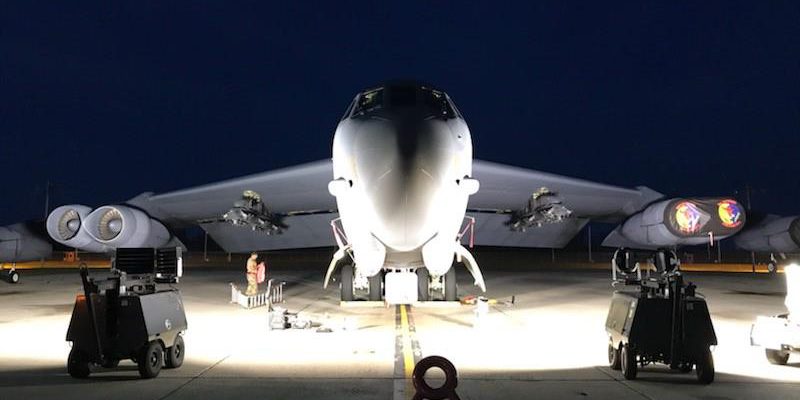We all know that working in the dark with insufficient lighting makes the task that much more cumbersome. Good quality lighting is critical for maintainers when repairing an aircraft on the flightline.
The U.S. Air Force has an inventory of approximately 5,500 four-wheel diesel light carts that provide flightline and perimeter illumination. This lighting is a necessity for aircraft maintenance, troubleshooting and outside lighting to secure the outskirts of deployed/contingency locations.
Recently, a cross-enterprise team from the Air Force Materiel Command, Air Force Global Strike Command (AFGSC), and Concurrent Technologies Corporation successfully conducted testing at Minot Air Force Base on a flightline light cart retrofit kit that contains new light-emitting diode (LED) fixtures.
“This activity is in direct response to a request made by AFGSC Director of Logistics and Engineering during the U.S. Air Force Basing and Logistics Senior Leader Showcase at the Materials and Manufacturing Directorate in April 2019,” said Tom Layne, Air Force Research Laboratory Advanced Power Technology Office Project Engineer. “We wanted to move out rapidly with a great team—our biggest challenge was the schedule impact from COVID.
The LED fixtures are intended to replace legacy metal-halide lamps on flightline FL-1D light carts. LEDs offer many advantages to an agile and resilient flightline, such as immediate illumination, longer life, improved color rendering, and lower operating temperatures.
Testing evaluated the retro-kit conversion instructions and solicited feedback from the maintainers who use the light carts. Project funding was made possible by the Assistant Secretary of the Air Force for Energy, Installations, and Environment.


